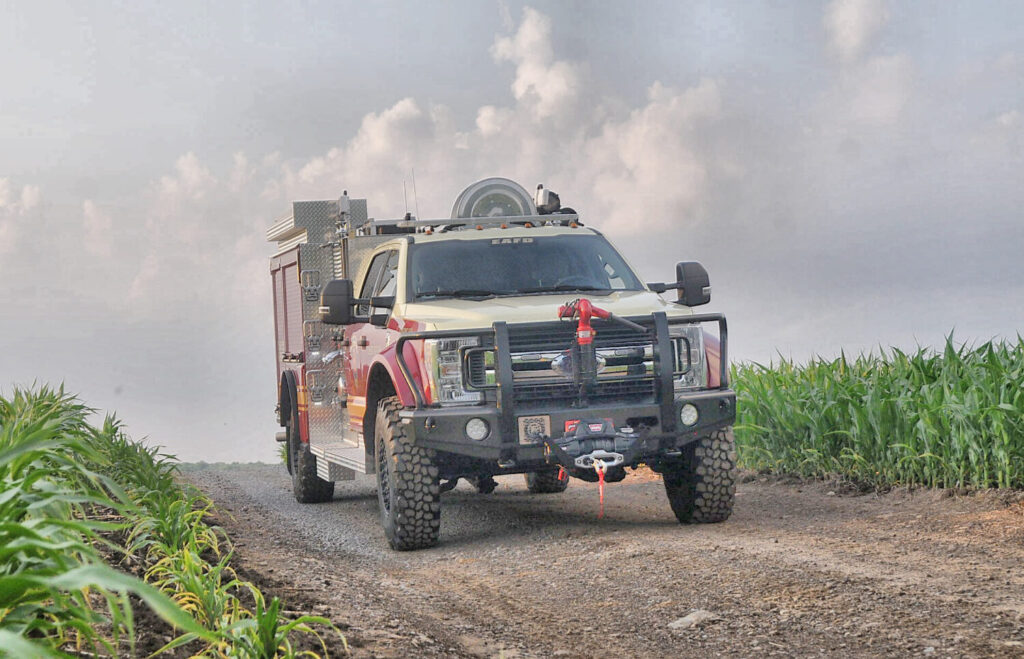Getting funding is an important but equally challenging part of maintaining a fire department. As equipment ages, it deteriorates and becomes less efficient. Eventually, those inefficiencies add up, and it’s no longer safe to use.

Starting an Assistance to Firefighters Grants
Even the most diligent and attentive departments can find themselves with a shortage of funding when a tool unexpectedly breaks, or piece of equipment falls apart. Thankfully departments have access to alternative funding sources this article will concentrate on the AFG process.
Before you get started, you must have your Data Universal Numbering System (DUNS) number and are registered in the System for Award Management (SAM). You can get your DUNS here and register for SAM here. It may take four weeks or more after registering with SAM before your registration is active.
The primary goal of the AFG is to meet the firefighting and emergency response needs of fire departments, nonaffiliated emergency medical service organizations, and State Fire Training Academies. The AFG Program can be a godsend to organizations struggling to get its needs met, but the process to obtain a grant can be rather involved. To apply for a grant, departments need to provide information in 5 categories which are: Organization, Financial Need, Project Description/Budget Justification, Operations and Safety/Cost-Benefit, and Statement of Effect/Impact on Daily Operations. I know this can be daunting at first, but after breaking it down, it’s pretty straight forward.
Opening Statement
The opening statement comes before everything else. It’s a brief 2 to 3 sentence summary of what you are requesting and why. If you are having trouble writing this section, don’t worry, you can complete the rest of the application and come back. It’s often easier to summarize your opening statement after going through the rest of the process.
Organization (Community Served)
Filling out this section you have to answer a couple of questions:
What’s your organization like? What are your special needs required to serve the community? Are there any special hazards in your community? What are the demands of your organization based on the needs of the community? Try to craft a narrative of your organization and the community you serve.
The Plainfield Fire department has been serving our area since it’s inception in 1891. Our organization has grown to 97 individuals that have dedicated their lives to our City and citizens. To meet the expectations of our community and the communities around us, we have established a partnership program with neighboring departments.
As our community has grown, so too has the needs of the fire services. A recent review of our calls showed that only around 1% of our calls were to structure fires. We also found in the review that an increasing number of calls are related to water rescue during the winter season.
The Plainfield River runs through our and neighboring communities, a change to water flow further up the river has caused an increased current. Many citizens underestimate the river’s current, which has led to an increase in the need for water rescue.
The Plainfield Fire Department is seeking funding for 5 Ice Rescue Suits to improve our water rescue operations. Having these suits will give us the ability to provide water rescue services to our and neighboring communities during the winter months when traditional rescue suits don’t provide the same level of insulation.
It’s important to explain the obstacle your organization is trying to solve. In the example above, the Plainfield Fire Department focuses on their recent uptick in rescue calls, and the river’s increased current as a problem. They then identify the need to improve their water rescue operations during the winter by requesting funding for Ice Rescue Suits. They also mentioned that they respond to neighboring communities as needed, so the Ice Rescue Suits will also be used to help those communities as well. Remember to be specific about the items you want to be funded. if you are vague and say something to the effect of, “we need $3,000 for water rescue equipment,” the AFG Panel Reviewers will have a harder time authorizing funding.
Financial Need
In this section, you need to show that your organization does not have the budget to obtain the equipment. Be sure to submit a summary of your budget constraints, unsuccessful attempts to secure other funding, and proving the financial distress is out of your control. It’s important to stress that AFG’s are your organization’s final option.
While you don’t have to submit your entire budget, you should be able to give a summary that shows where your funds are currently being allocated. Make sure to highlight the reasons you are unable to shift money around to acquire the equipment you’re requesting. You should include attempts your department has made to obtain additional funding from alternative sources that was denied. The goal of this section is to show the Panel Reviewer that your department has exhausted every other method of acquiring funding and that the financial distress is something you could not have planned for or avoided.
Project Description and Budget Justification
In this section, you need to explain how receiving these funds will help your organization’s goals. You’ll need to provide risk analysis and statistics that justify the needs for the funding. If you need this funding to meet specific local and state requirements, make sure to add that to this section.
The goal of this section is to show that your organization knows what it wants to use the funds for and why it needs the funds. Let’s start by explaining why you need this funding. In the case of the Plainfield Fire Department, they are seeking funds to get new Ice Rescue Suits. It is their organization’s responsibility to provide their community with water rescue operations. The recent uptick in water rescue calls and more forceful currents have led to a need to provide water rescue specifically during the winter season. The Plainfield Fire Department can provide figures showing the risks they will undertake if they don’t get the funding, such as risks of using standard rescue equipment for ice rescues.
Operations and Safety/Cost-Benefit
In this section, you need to showcase that the funds will provide far more value than the cost. Showing how receiving the funds will save your department more money down the road. Monetary value is a great place to start, but be sure to include how it will impact your team’s safety and ability to provide for your community and surrounding communities. Getting a new piece of equipment or tool will often have a trickle-down effect of savings. Take the time to imagine the impact the item(s) will have: Will it reduce injuries? Will It improve our operation times? Will having this item reduce fatigue? Despite not saving money directly, improvements in any of these categories indirectly save money and should be included in this section.
You also need to show how you arrived at your funding request. Include market research and quotes, if possible. The Panel Reviewers need to be shown that the amount you’re requesting will be enough to enact your request, and they need to make sure that your request isn’t more than you need. Keep in mind the Panel only has so much money to give, if one or two departments receive a few thousand dollars more than they need, that’s potentially one less organization receiving help.
Statement of Effect
We are almost done. The Statement of Effect section is where you can explain how the item(s) you’re requesting will impact daily operations. Where the Operations and Safety/Cost-Benefit section was asking for monetary advantages in this section you want to discuss all the intangible benefits and how your department will use the equipment.
A good place to start is how this equipment will factor into your day to day operations. It’s also a good idea to include how often it will be used. The more the item affects the day to day operations, the more likely the reviewer will prioritize your grant. It doesn’t hurt to include data from previous calls and describing how having the equipment then could have benefited your team.
At the end of the day, it’s about safety, saving lives, and protecting property. Putting into words how receiving the grant will improve your department’s ability to do all three will go a long way to getting the grant.




